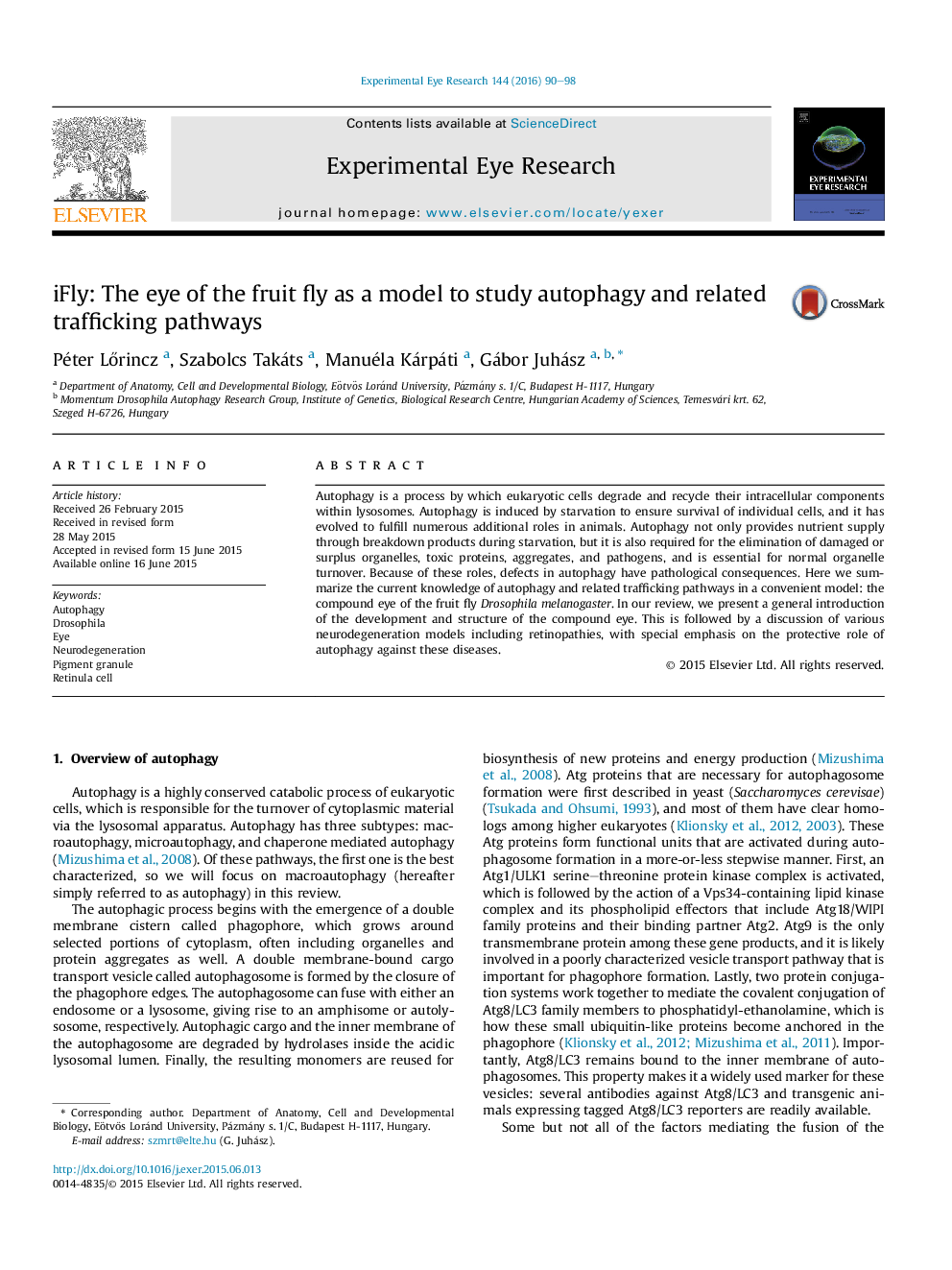| کد مقاله | کد نشریه | سال انتشار | مقاله انگلیسی | نسخه تمام متن |
|---|---|---|---|---|
| 4011086 | 1602578 | 2016 | 9 صفحه PDF | دانلود رایگان |
• The fly eye is a popular and excellent model for retinopathies and proteinopathies.
• Autophagy plays important roles in health and disease.
• Autophagy is dispensable for eye development and pigment granule formation.
• Autophagy usually protects from neurodegeneration induced by light or mutant proteins.
Autophagy is a process by which eukaryotic cells degrade and recycle their intracellular components within lysosomes. Autophagy is induced by starvation to ensure survival of individual cells, and it has evolved to fulfill numerous additional roles in animals. Autophagy not only provides nutrient supply through breakdown products during starvation, but it is also required for the elimination of damaged or surplus organelles, toxic proteins, aggregates, and pathogens, and is essential for normal organelle turnover. Because of these roles, defects in autophagy have pathological consequences. Here we summarize the current knowledge of autophagy and related trafficking pathways in a convenient model: the compound eye of the fruit fly Drosophila melanogaster. In our review, we present a general introduction of the development and structure of the compound eye. This is followed by a discussion of various neurodegeneration models including retinopathies, with special emphasis on the protective role of autophagy against these diseases.
Journal: Experimental Eye Research - Volume 144, March 2016, Pages 90–98
